The British Museum has been running a free exhibition from 10 September to 22 November 2009 on dogu. As the blurb on the exhibition fliers state:
“This exhibition highlights the beauty and power of remarkable ceramic figures known as dōgu, mysterious masterpieces that were produced in great numbers in prehistoric Japan.”
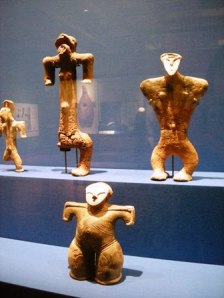 I went along to this exhibition today (in the pouring rain – thanks British weather system) and saw these charming little gingerbread men like neolithic figures.
I went along to this exhibition today (in the pouring rain – thanks British weather system) and saw these charming little gingerbread men like neolithic figures.
Dōgu are from the earliest-dated tradition of pottery manufacture in the world, dating to the prehistoric Jōmon period, which began 16,000 years ago. Most of the figures in the exhibition are from about 2500 BC to 1000 BC (the Middle and Late Jōmon periods) and show the development of the sculptural form over time (British Museum website accessed Nov 14 2009).
Given their age it’s understandable why no-one is entirely clear why the Jōmon people created these figures in the first place. Some think they were totems or emblems used to aid communication between people and spirits. It’s not even always clear if they are men or women, human or animal, or something new and distinct.
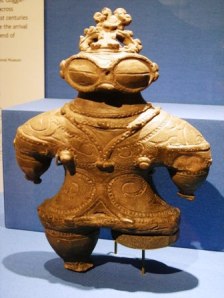 The first figure was found in Kamikuroiwa in Shikoku but they have been found all over Northern Japan; from Honshu to Hokkaido. There’s a clear progression in style from the Early to the Final Jōmon periods. As time passed relatively simple designs made by pressing twisted cords of plant fibres into the clay body prior to firing, were embellished by carving, arabesques, relief patterns and rows of dots. Earlier stiff and stationary dōgu were later shown dancing or holding pots. Some dōgu are integrated into vessels that could be lamps, drums or cooking utensils.
The first figure was found in Kamikuroiwa in Shikoku but they have been found all over Northern Japan; from Honshu to Hokkaido. There’s a clear progression in style from the Early to the Final Jōmon periods. As time passed relatively simple designs made by pressing twisted cords of plant fibres into the clay body prior to firing, were embellished by carving, arabesques, relief patterns and rows of dots. Earlier stiff and stationary dōgu were later shown dancing or holding pots. Some dōgu are integrated into vessels that could be lamps, drums or cooking utensils.
The style seems to have reached a pinnacle in the form of the masked dōgu found in Nakappara in Nagano-ken and in the “google-eyed dōgu” which is shown above.
Gallery
Click the thumbnails below for a larger picture.
External links
Tags: british museum, ceramics, Japanese
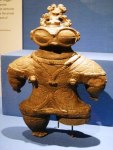
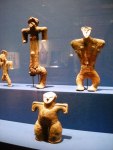
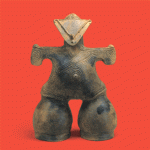
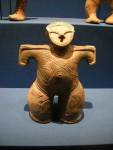
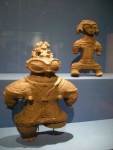
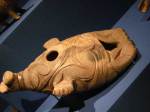
You must be logged in to post a comment.